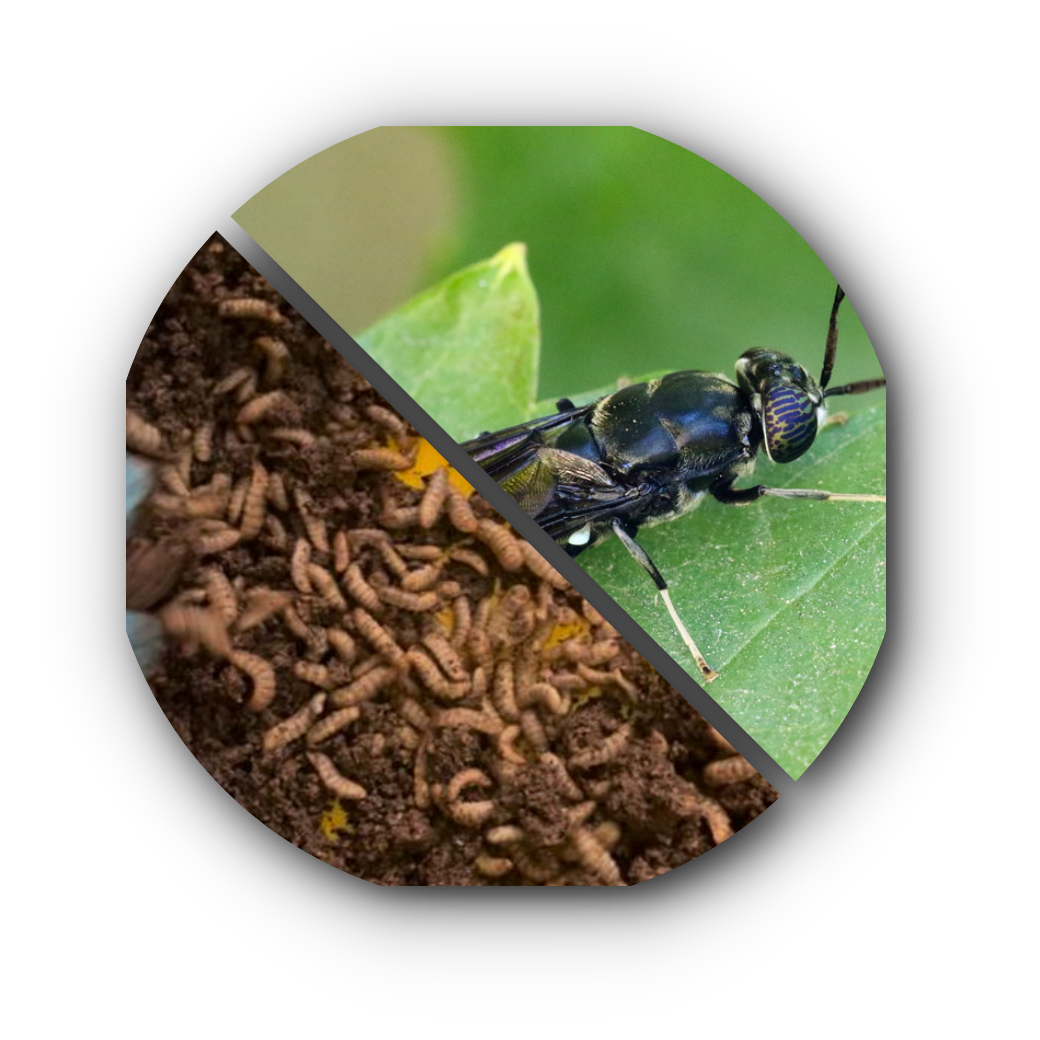Black Soldier Fly
Dietary Influence on Growth, Physicochemical Stability, and Antimicrobial Mechanisms of Antimicrobial Peptides in Black Soldier Fly Larvae
Introduction
A 2024 research article published in Insects by Liu et al. investigates how different diets influence the growth of black soldier fly larvae (BSFL) and the stability, mechanism, and effectiveness of their antimicrobial peptides (AMPs). In the context of growing concern over antibiotic resistance and the need for sustainable alternatives, this study offers insight into how BSFL-derived AMPs could serve as viable natural antibiotics, especially in animal feed.
Key Findings From the Research
The study found that BSFL reared on a pure wheat bran diet exhibited significantly better growth performance and higher AMP production compared to those reared on bran mixed with soybean, peanut, or rapeseed cake. Among all groups, larvae fed wheat bran had the highest protein content and showed the strongest inhibition against Staphylococcus aureus, indicating superior AMP yield and potency.
AMPs extracted from these larvae also showed strong physicochemical stability. Their antimicrobial activity was unaffected by UV exposure and salt concentrations, and remained effective at temperatures up to 80°C. However, antimicrobial effectiveness declined when the extracts were exposed to copper ions or treated with certain surfactants like SDS and Tween-80. Interestingly, AMPs remained more stable when stored at lower temperatures, with increased antimicrobial activity observed at −20°C and −80°C over time.
The mechanism of action of these AMPs was explored using microscopy and flow cytometry. The researchers demonstrated that AMPs disrupt bacterial membranes, increasing their permeability, and also interfere with bacterial replication by inducing cell cycle arrest in S. aureus. These effects occurred in a dose-dependent manner, indicating a clear relationship between AMP concentration and bacterial inhibition.
At the genetic level, transcriptomic and protein interaction analyses revealed that 509 genes were differentially expressed following S. aureus immunization. Many of these genes were linked to the Toll and IMD signaling pathways, which regulate AMP expression. Notably, gene families encoding cecropins, defensins, and attacins were highly upregulated in response to bacterial exposure, reinforcing their role in innate immune defense. These findings were further validated through qRT-PCR, confirming the upregulation of key immune genes such as GNBP3, Spz, and NFKBIA.
Why Is This Important
This study highlights how diet can serve as a powerful tool for enhancing the growth and immune function of BSFL, with direct implications for AMP production. By identifying wheat bran as an optimal rearing substrate, the researchers provide a practical and scalable solution to improve AMP yield, which is crucial for commercial applications in feed or pharmaceutical development.
Moreover, the demonstrated stability of AMP extracts under heat, UV, and storage stressors supports their feasibility as additives in real-world animal feed production. The dual antimicrobial mechanisms—membrane disruption and cell cycle arrest—offer a multi-pronged approach to pathogen control, reducing the likelihood of resistance development. The genetic insights gained from this study also pave the way for future work in selective breeding or genetic engineering of BSFL for enhanced immune output.
Reference
Liu, S., Tariq, M. R., Zhang, Q., Wang, H., Wang, F., Zheng, C., Li, K., Zhuang, Z., & Wang, L. (2024). Dietary Influence on Growth, Physicochemical Stability, and Antimicrobial Mechanisms of Antimicrobial Peptides in Black Soldier Fly Larvae. Insects, 15(11), 872–872. https://doi.org/10.3390/insects15110872
